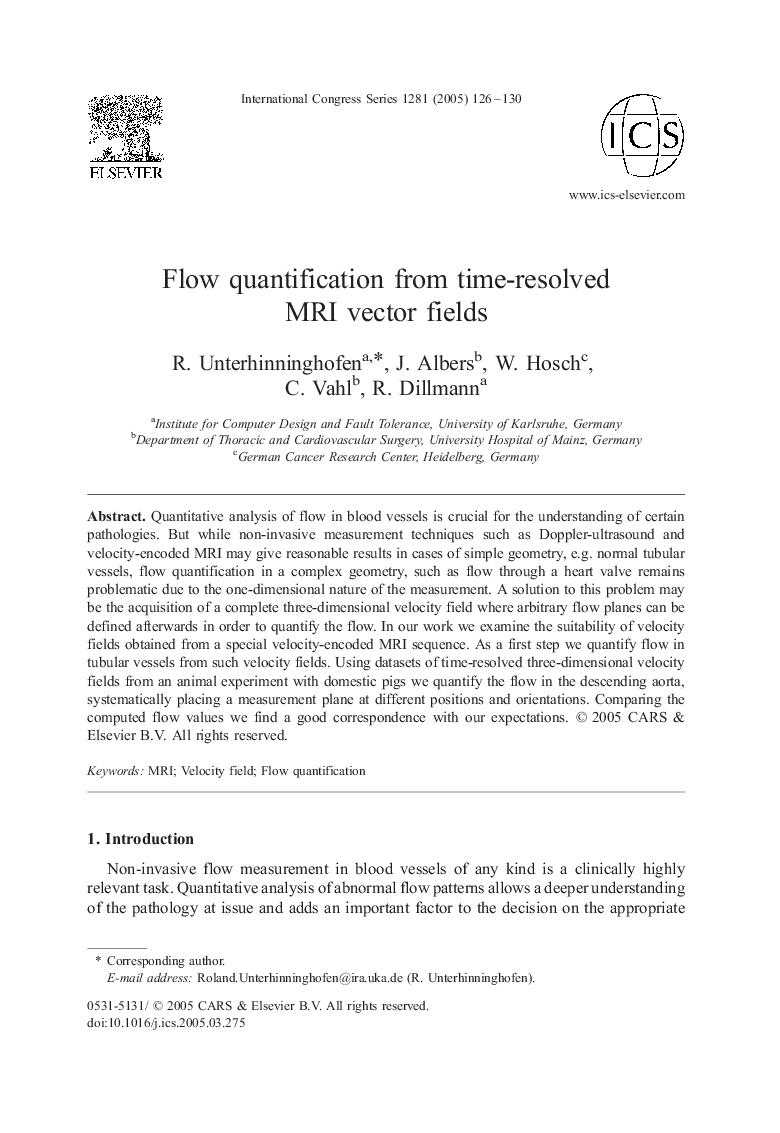| Article ID | Journal | Published Year | Pages | File Type |
|---|---|---|---|---|
| 9021132 | International Congress Series | 2005 | 5 Pages |
Abstract
Quantitative analysis of flow in blood vessels is crucial for the understanding of certain pathologies. But while non-invasive measurement techniques such as Doppler-ultrasound and velocity-encoded MRI may give reasonable results in cases of simple geometry, e.g. normal tubular vessels, flow quantification in a complex geometry, such as flow through a heart valve remains problematic due to the one-dimensional nature of the measurement. A solution to this problem may be the acquisition of a complete three-dimensional velocity field where arbitrary flow planes can be defined afterwards in order to quantify the flow. In our work we examine the suitability of velocity fields obtained from a special velocity-encoded MRI sequence. As a first step we quantify flow in tubular vessels from such velocity fields. Using datasets of time-resolved three-dimensional velocity fields from an animal experiment with domestic pigs we quantify the flow in the descending aorta, systematically placing a measurement plane at different positions and orientations. Comparing the computed flow values we find a good correspondence with our expectations.
Keywords
Related Topics
Life Sciences
Biochemistry, Genetics and Molecular Biology
Molecular Biology
Authors
R. Unterhinninghofen, J. Albers, W. Hosch, C. Vahl, R. Dillmann,
